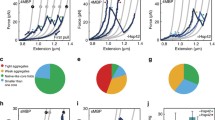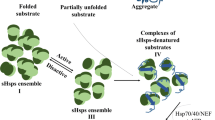Abstract.
Small heat shock proteins are ubiquitous proteins found throughout all kingdoms. One of the most notable features is their large oligomeric structures with conserved structural organization. It is well documented that small heat shock proteins can capture unfolding proteins to form stable complexes and prevent their irreversible aggregation. In addition, small heat shock proteins coaggregate with aggregation-prone proteins for subsequent, efficient disaggregation of the protein aggregates. The release of substrate proteins from the transient reservoirs, i.e. complexes and aggregates with small heat shock proteins, and their refolding require cooperation with ATP-dependent chaperone systems. The amphitropic small heat shock proteins were shown to associate with membranes, although they do not contain transmembrane domains or signal sequences. Recent studies indicate that small heat shock proteins play an important role in membrane quality control and thereby potentially contribute to the maintenance of membrane integrity especially under stress conditions.
Similar content being viewed by others
Explore related subjects
Discover the latest articles and news from researchers in related subjects, suggested using machine learning.Author information
Authors and Affiliations
Corresponding author
Additional information
Received 11 July 2006; received after revision 4 October 2006; accepted 10 November 2006
Rights and permissions
About this article
Cite this article
Nakamoto, H., Vígh, L. The small heat shock proteins and their clients. Cell. Mol. Life Sci. 64, 294–306 (2007). https://doi.org/10.1007/s00018-006-6321-2
Published:
Issue Date:
DOI: https://doi.org/10.1007/s00018-006-6321-2




